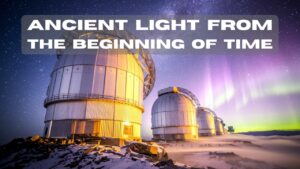Intuitive Machines to Launch Mission Seeking Lunar Ice

Intuitive Machines is embarking on an exciting mission to the Moon. They are sending a lunar lander named Athena on their second mission, called IM-2. On February 26th, SpaceX will launch the mission from Florida’s Space Coast. The destination is a plateau located roughly 100 miles from the Moon’s south pole. This site is chosen because it is thought to be rich in water ice.
Why Water Ice Matters
Water ice on the Moon holds great promise for future space endeavors. It can be transformed into drinkable water for astronauts or converted into oxygen, which is vital for breathing. Moreover, water can be split into hydrogen and oxygen to create rocket fuel. This flexibility makes it a crucial resource for extended missions and potential lunar bases in the future.
Technological Highlights
The mission utilizes cutting-edge technology. Athena is a powerful lunar lander equipped with advanced scientific tools. It carries out a significant task: searching for water ice and other minerals on the lunar surface.
Mission Goals
- Investigate Water Ice: The primary objective is to analyze the surface for signs of water ice.
- Assess Resources: Beyond water, the mission will survey other materials that might support human life or future space missions.
- Develop Lunar Technologies: By using and improving technology, the mission hopes to pave the way for future lunar exploration efforts.
Partnerships and Innovation
Intuitive Machines collaborates with various partners to achieve its goals. During the mission, advanced equipment and instruments will be used. For instance, NASA’s Polar Resources Ice Mining Experiment-1 (PRIME-1) will be on board, further enhancing the mission’s potential success by aiding with ice detection and mapping.
Scientific and Economic Impact
- Discoveries in Science: Gaining knowledge about the Moon’s natural resources can lead to many scientific breakthroughs.
- Economic Potential: By identifying and utilizing lunar resources, the mission could open up new economic avenues, reducing the cost of space exploration in the future.
The IM-2 mission is an example of how collaboration and technological innovation can expand our horizons. Intuitive Machines are not just exploring; they are also setting the stage for a new era of space travel and resource utilization on the Moon. The discoveries from this mission could shape the future of lunar exploration and even support the dream of human colonies beyond Earth.
Athena’s Mission to Locate Water Ice

Athena is set for a groundbreaking mission with a team of robotic explorers, featuring a special hopping robot called Gracie. This clever lander uses its thrusters to make a series of higher jumps, skillfully moving across the moon’s surface to gather key information and look for water ice reserves.
One significant movement involves a leap up to 330 feet in the air, as shared by Trent Martin, a senior executive at Intuitive Machines. This advanced tech is aimed at helping experts examine the lunar soil and pinpoint spots where water might be extracted in future missions.
Mapping Out a Plan for Exploring the Moon

Intuitive Machines, a private company, is making strides in lunar exploration. Their IM-2 mission, following the successful Odyssey mission, emphasizes the growing influence of private businesses in space. These missions are crucial as they help set the stage for future human settlement on the Moon.
Why Water Ice Matters
Water ice on the Moon has great potential for supporting future missions. It can be converted into drinking water and oxygen for astronauts. Additionally, it can be used to produce rocket fuel. This reduces dependency on supplies from Earth, making space travel more feasible and cost-effective. Harnessing this resource is vital for establishing a long-term Moon base.
Looking to the Future: Exploring the Moon
The IM-2 mission is an important step in exploring and using the Moon’s resources. The data collected will help guide the next lunar missions. This effort brings humanity closer to becoming a multi-planetary species. Understanding the Moon better can lead to future human exploration and possibly even living there someday.
NASA’s Robot Explorer Heads to Shadowy Moon Crater
In an exciting step for lunar exploration, Intuitive Machines plans to send a small, jumping robot called “Gracie” to the Moon. Gracie will travel on the Athena lander, which is their second lunar mission. It will be the first hopper to investigate the Moon’s unique terrain.
Entering the Shadows
Gracie’s mission centers around exploring tough areas on the Moon by hopping. The vehicle aims to reach Crater H, a location always hidden from sunlight, about 1,650 feet away from Athena’s landing spot. Measuring around 65 feet deep, this crater presents a rare setting to investigate how water ice survives in regions that never see the sun. As explained by Intuitive Machines during a NASA press meet, the plan is to hop Gracie straight into this darkened crater, offering a closer look into its mysterious conditions.
LTE on the Lunar Surface
Communicating with the Gracie hopper as it explores is a major challenge. To tackle this, Intuitive Machines teamed up with Nokia. Together, they are setting up the first 4G/LTE network on the Moon. This technology, which is part of the IM-2 mission, ensures that even in shadowy areas, there is a constant link with mission control.
Advances in Technology
Gracie is built to move on its own and work effectively in tough surroundings. Though its main aim is to show off new technology, it also helps gather important scientific details. Equipped with a “water snooper,” it checks lunar ground for any water ice. Additionally, cameras capture key visual data during its jumps.
Water Ice Prospecting
The mission carries NASA’s Polar Resources Ice Mining Experiment 1 (PRIME-1), an essential part of NASA’s program for delivering payloads to the Moon. PRIME-1 features a drilling tool that can obtain samples from as deep as 3.3 feet (1 meter) beneath the lunar surface. These samples are analyzed with a mass spectrometer to check for water and other essential elements. This data is vital to NASA’s efforts to assess the Moon’s water resources, which could be crucial for developing future missions to explore and potentially inhabit the lunar surface.
A New Era of Lunar Exploration
Gracie’s voyage to the Moon is a giant leap in the field of space science. This mission introduces cutting-edge technology that pushes lunar exploration to new frontiers. Robotic explorers like Gracie are vital in gathering knowledge about the Moon, providing insights that could support future human missions and potential habitats.
Companies Leading Lunar Exploration
Private companies are taking bold steps in exploring the moon, bringing fresh ideas and technology to the forefront. These businesses are not just participating; they are becoming leaders in the field. With successful landings and innovative rovers, they are transforming lunar exploration. Their efforts are opening a new chapter in space discovery, inspiring many with each achievement.
Intuitive Machines: Trailblazers in Private Moon Landings
In February 2024, Intuitive Machines (IM) achieved a groundbreaking feat with their IM-1 mission. They successfully landed the Odysseus spacecraft on the lunar surface, marking the first time a privately constructed lander accomplished a soft touchdown on the Moon. This significant milestone highlighted the technical skill of private companies in the evolving space industry. Remarkably, Odysseus managed to land successfully even though it encountered difficulties during its descent. The landing was harsher than expected, causing one leg to break and leaving the spacecraft slightly tilted. Despite this, IM-1 showcased impressive capability.
Athena Mission: Discovering Lunar South Pole Secrets
An Innovative Trio of Rovers
The Athena mission is poised to explore the lunar south pole with the help of three advanced rovers, each bringing unique capabilities to the mission’s goals.
MAPP (Mobile Autonomous Prospecting Platform): Created by Lunar Outpost, this rover weighs only 22 pounds and is equipped with both high-resolution optical and thermal cameras. These tools allow it to produce detailed 3D images of the moon’s surface. Additionally, MAPP will collect lunar soil, found to be invaluable for understanding the moon’s composition, under a NASA agreement.
AstroAnt: Developed by MIT, this small and innovative robot rides on MAPP. With its four magnetic wheels, AstroAnt securely travels across rough and uneven lunar landscapes. Its main task is to gather temperature data, which supports the detailed mapping work done by MAPP.
Yaoki: Designed by Japan’s Dymon, Yaoki is a lightweight 17.6-ounce rover showcasing impressive autonomous navigation and exploration skills. Its small size and high agility make it ideal for navigating difficult terrain and possibly revealing hidden features of the lunar landscape.
Each rover is set to make significant contributions to the Athena mission’s aim of shedding light on the lunar south pole’s mysteries, potentially finding water ice and other crucial lunar resources. These robotic explorers are prepared to tackle the challenging conditions of their environment, offering exciting possibilities for discoveries on the lunar surface.
The Future of Lunar Exploration: A Collaborative Landscape
The growing participation of private firms is reshaping how we explore the moon. They contribute not just money but also fresh technology and a practical mindset to space exploration. For example, missions like Athena are paving the way for innovative advancements in robotic technology. This progress is helping turn the moon into a site for scientific investigation, resource gathering, and potential human habitation.
These companies are pushing the envelope, and their efforts make the future of lunar exploration look promising and full of discoveries. Their involvement is crucial in making space a place of shared exploration and learning.
Ispace’s Resilience Lunar Lander Sets Off on Notable Mission
Ispace, a Japanese enterprise, embarked on an exciting chapter with its first lunar landing mission. Their spacecraft, christened Resilience, was launched into space via a SpaceX Falcon 9 rocket on January 15. This daring project marks a crucial step in the emerging commercial space sector and lays the groundwork for exciting future lunar projects.
A New Chapter in Moon Exploration
Resilience, developed by a Tokyo-based firm, embodies a nation’s desire to make history on the Moon. This mission marks a shift in space exploration as private companies are increasingly contributing to scientific breakthroughs and advancing technology. The mission highlights the growing role of private sector initiatives in space discovery.
Goals and Importance of the Mission
Resilience aims to prove a smooth and precise landing on the Moon. It will gather important lunar samples and carry out experiments to learn more about the Moon’s surface and surroundings. This mission sets a foundation for future lunar exploration.
Global Teamwork and New Ideas
Resilience’s mission showcases how countries can work together by bringing various instruments from around the world for moon exploration. This shared effort reflects a global passion for discovering new knowledge, sparking fresh ideas and advancing science.
The Path Forward: Commercialization and Sustainability
Ispace’s mission marks an important step toward commercial ventures on the Moon. Proving that private firms can deliver lunar landers successfully opens opportunities for more missions, which might include building infrastructure and utilizing lunar resources. This could eventually lead to humanity expanding its presence beyond Earth.
The Moon is gaining renewed attention as a hub for human ambition and scientific discovery. It offers us a chance to learn more about our closest cosmic neighbor. The progress in this field shows the potential for future space exploration and the creativity that drives humans into new frontiers.



